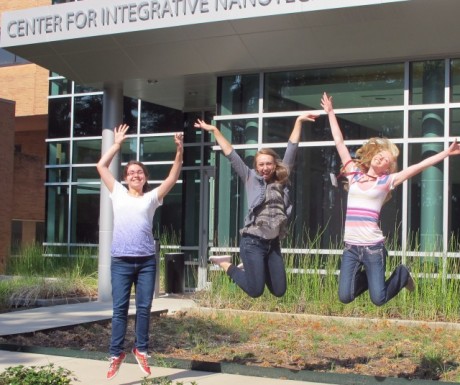At CINS, many of our researchers have their PhDs, most have their bachelor’s degrees, but some don’t even have their high school diplomas yet.
For the past six years, high school students have teamed up with CINS staff to undertake advanced nanotechnology research projects each summer. As participants in the Donaghey College of Engineering and Information Technology’s (EIT) annual High School Research Program, these students stay in UA Little Rock dorms, eat the cafeteria food, and work in CINS labs nearly every day for three weeks.
 2016 marked the Program’s tenth year of inviting academically exemplary young people to live and learn at UA Little Rock for a portion of their summer. Professors from a variety of STEM departments on campus invite them into their labs to work on specific projects geared towards the students’ interests. EIT Assistant Dean Vernard Henley, Jr., has coordinated the program for years since its early years, and he’s seen the impact it can have on young people.
2016 marked the Program’s tenth year of inviting academically exemplary young people to live and learn at UA Little Rock for a portion of their summer. Professors from a variety of STEM departments on campus invite them into their labs to work on specific projects geared towards the students’ interests. EIT Assistant Dean Vernard Henley, Jr., has coordinated the program for years since its early years, and he’s seen the impact it can have on young people.
“The High School Research Program continues to provide high achieving students with an opportunity to explore options within fields that they normally would not get an opportunity to do so. All students, regardless of their academic achievement, need to feel confident in their selection of their career choice. The High School Research Program not only enables students to gain confidence about their career choice by immersing them in related research, but it also provides students with an opportunity to reside with like-minded peers in an inclusive environment. This summer, one student noted that she was unsure about majoring in computer science, but the opportunity to work one-on-one with EIT faculty on application development has inspired her to enter computer science upon graduation.”
This summer, the Center hosted four bright students with diverse interests. Each partnered with a different CINS faculty member to carry out a college-level research project.
Luka Valencic, a Colleyville, Texas, native and junior at Grapevine High School mentored by CINS’s Dr. Viney Saini, said that the summer program taught him “what it’s like to work in a laboratory environment. It gave me a feel for what college students do for research projects; I learned how different things work in the lab and what their purpose is.”
Luka developed solar cells made with single-walled carbon nanotubes and silicon. Luka produced carbon-based nanofilms and coated silicon strips with them, then tested the resulting solar cells’ effectiveness. This research gave Luka a deeper understanding of how solar cells function molecularly.
Sakshi Garg, an upcoming freshman at Little Rock Central High School, studied the thermal and mechanical properties of biocompatible polymer composites. Mentored by Dr. Shawn Bourdo, Sakshi examined how adding a certain nanomaterial to a polyurethane film effects its strength under stress and behavior when heated. The materials she studied could be used in scaffolds that aid in bone regrowth. Dr. Bourdo was impressed by Sakshi’s talent. “Sakshi was a joy to have in the lab,” he said. “She was a motivated student and displayed a keen interest in learning. I look forward to hearing about her future achievements in high school and beyond.”
Riya Mittal, a student at KIPP Blytheville College Preparatory School, focused her research on superhydrophobic (water-repellent) and oleophobic (oil-repellent) membranes. Mentored by Dr. Ganesh Kannarpady, Riya analyzed the composition and behavior of water- and oil-repellent materials. Such materials could be useful for a variety of applications, including oil spill cleanup.
Pooja Naik, a senior at Bentonville High School, studied the surface features of butterfly wings and worked to replicate them on a man-made material using silver and gold nanostructures. Mentored by Dr. Fumiya Watanabe, Pooja used CINS’s scanning electron microscope to learn what gives the wings their iridescent appearance, then deposited gold and silver on Gore-Tex, a synthetic polymer, to try to get the same effect. The resulting changes in the appearance of the polymer fabric samples were evaluated by the Center’s Shimadzu UV-3600 UV/Visible/NIR spectrometer.
Pooja was successful in altering the appearance of the polymer, and Dr. Watanable declared their partnership a success as well. “Pooja was the one of the best students I have ever worked with at UA Little Rock. Her understanding of science and technology is very advanced. I can see she will go very far in any field she chooses.”